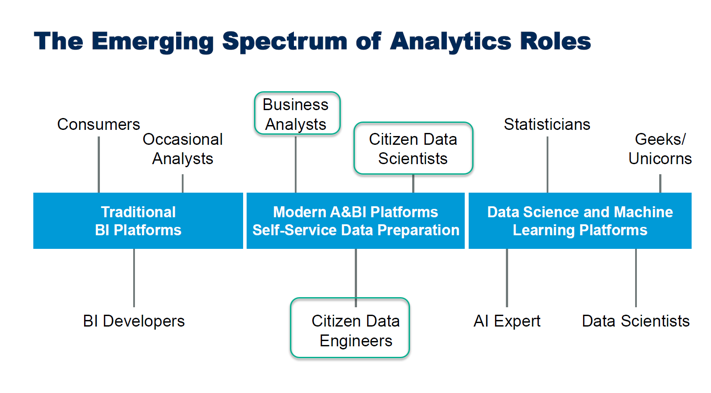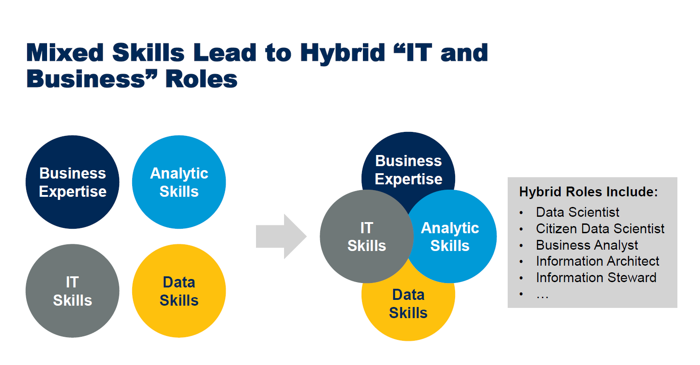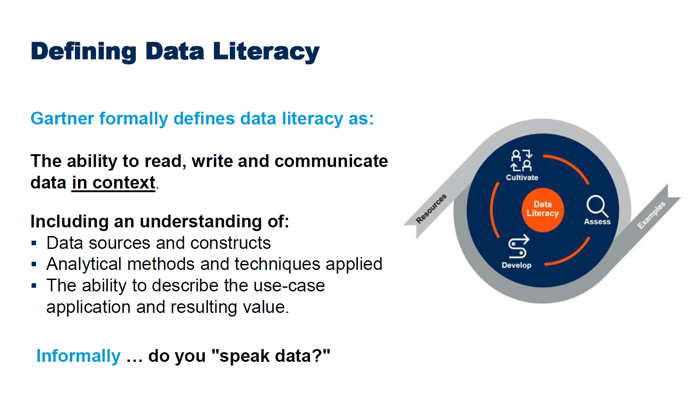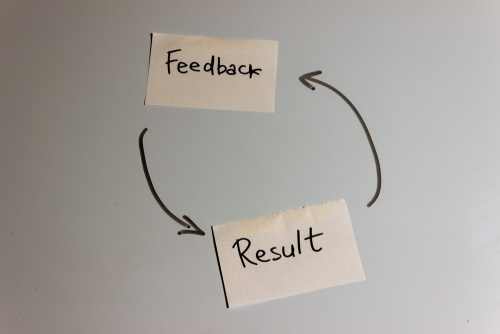As regular readers know, I attended the Gartner Analytics Conference in Orlando a few weeks ago. Since then, I’ve been synthesizing my key takeaways in blog posts. My first key takeaway centered around Organizing the Chaos. Last week, I followed that up with a post on Governing Self Service BI. This week, I am writing up the last key take away — drive analytics innovation with efficiency.
To explain my other key takeaways, I collated content from several conference presentations. This key takeaway is a bit different. The presentations were more inspiration for my own thoughts and ideas. To explain this takeaway, I’ll break it down into four key points.
Make Efficient, Automate, Then Innovate
- Time wasted is innovation lost.
- Enable the citizen.
- Automate the mundane.
- Innovate by experimenting and getting immediate feedback.
Time Wasted Is Innovation Lost
I’ve been working on a lot of big Spotfire and Alteryx projects lately. I don’t seem to get thrown the easy stuff anymore or maybe we’ve solved all the easy problems. As projects get bigger, I find myself spending more and more time waiting. I wait for Spotfire projects to reopen after they have crashed (or IT force restarted my computer while I was at lunch). More waiting happens when anytime I update data. Data functions make me wait. Even Alteryx takes time to cache and complete. How else do you think I find time to blog!
Long load time, in particular, is something we have just come to tolerate. However, I realized time wasted is innovation lost. We only have so many hours in the workday and while we can do some multi-tasking, every minute I spend waiting or performing some mundane task is time spent not learning, creating, experimenting, or innovating.
Now, I spend a lot of time waiting for data, but there are many different ways users waste time, and I don’t mean Facebook. What about time wasted because users don’t know where data is or how to use it? What kind of gains could you be making if people knew where to find data and were data literate?
So, with that said…
Enable the Citizen
Who is the Citizen
My previous posts have already touched on how the traditional BI model doesn’t really work because companies can’t hire enough developers, or data scientists for that matter, to meet demand. Therefore, companies must develop their citizens. Without them, you cannot scale.
Here is a slide from Jorgen Heizenberg’s presentation “The Foundation and Future of Roles and responsibilities: From Control to Collaborate”. As you can see, citizens are the people using self-service BI.

Your citizen data engineers might also be reservoir engineers or techs. I’ve touched on this in my post on Self Service BI, and I describe a change coming in Spotfire Skillsets – Historically Speaking. There are many new emerging analytics roles, and they are a hybrid of skills, as shown below also from Jorgen Heizenberg’s presentation “The Foundation and Future of Roles and responsibilities: From Control to Collaborate”.

This is an amazing thing for oil and gas because that opens up career paths for people like you and me that didn’t really have a career path otherwise. So, how do we enable the citizen?
How to Enable the Citizen
There are many ways to enable your citizens and make them more efficient. Here are three suggestions for maxim impact.
- Start a data literacy movement within your organization.
- Support citizens and data literacy with the roles discussed in Self-Service Should Be Governed.
- Provide a data catalog.
Just to make sure we are on the same page, here is Gartner’s definition of data literacy from Nick Heudecker’s presentation “Your Data Culture is CHanging — Do You Need DataOps?”.

I’m not going to go into how to build data literacy in this post. That’s far too meaty of a subject. I just wanted to stress the importance of data literacy.
Lastly, provide users with a data catalog. A data catalog informs customers about available data sets and metadata around a topic and assists users in locating it quickly. Now, data catalogs cost money, and they aren’t sexy. It’s hard to justify the cost, but when you start shaping the argument in terms of innovation lost, their value becomes much clearer.
Finally, let’s talk about another way of freeing up time — automation.
Automate the Mundane So You Can Innovate
The Alteryx presentation in Orlando was one of my primary sources of inspiration. Alteryx presented in conjunction with a health care services provider. This presentation wasn’t available for download, so I can’t provide more details. If anyone from Alteryx reads this, feel free to comment. The company in question showed several use cases for Alteryx, one of which automated the process of creating folders, saving data in Excel sheets, and then emailing them to people.
First, I didn’t realize you could run the command line interface from Alteryx, which is what this workflow was doing. Second, I realized I have overlooked incredibly simple use cases for the tool! I know there are operators out there doing this exact same task daily, weekly, and/or monthly to send partners data. Think about how much time that takes over the course of a year. What else could you be doing? Answer — LOTS. How many of your people go thru mundane, time-consuming tasks every day that could and should be automated? When you free up this time, you make time for creativity and innovation, so let’s talk about how to innovate.
Innovate By Experimenting and Getting Immediate Feedback
Jake Knapp, one of the keynote speakers, was my inspiration on innovation. A very long time ago, he worked on Encarta. Does anyone remember the Encarta encyclopedia? Because of how the product was released and sold, the development team didn’t get any feedback on the product until well after they had started building for the next year, which made incorporating improvements really hard.
In a perfect world, feedback occurs instantaneously, in a circular fashion. What he experienced with Encarta was more of a feedback ellipse. The circle gets pulled into an ellipse as the time to get feedback increases. Just to clarify, this is bad.

He went on to work for other companies including Google Ventures, which is where he really learned to experiment and focus on getting feedback faster. He did this so much, he wrote a book about it. It’s on my desk and will make an appearance on my Books page soon.
After his presentation, I put a lot of thought into how much I really experiment and get feedback in building Spotfire and Alteryx projects. While I experiment a lot with different solutions, I don’t usually feed them to the user. And, I have been following a particularly horrible process feedback process that looked like this…
- Build project
- Send to user
- User gets to it eventually
- User sends email feedback
- Make changes
- Repeat until it makes sense
This is slow and tedious. After the conference, I took a different approach that involved building, scheduling time with the user, and watching them go thru the solution to get immediate feedback. Not only did I get faster feedback, but I got more of it, and it was much more detailed. I was so excited, I wrote this post on 5 Ways to Increase Speed of Delivery. When you get feedback faster, it saves times and it also allows you to experiment more, which will lead to innovation.
Conclusion
Time and data are our two most precious commodities. Time wasted is worse than dollars wasted because we can’t get the time back. We can always make more money. The time people waste loading data, looking for data, and trying to understand data are innovation opportunities lost. Focus on getting rid of inefficient, mundane activities to make time for more value add experiments and innovation.

Pingback: 5 Ways to Approach Troubleshooting Data Problems » The Analytics Corner
Pingback: 5 Ways to Increase Speed of Delivery » The Analytics Corner
Pingback: Organizing Analytics Chaos » The Analytics Corner
Pingback: Scheduling An Alteryx Workflow to Run On the Last Business Day of the Month » The Analytics Corner
Pingback: Manage Analytics Assets with Microsoft Azure DevOps - Part 1 » The Analytics Corner